In the last year, as the pandemic has raged on, as we have experienced fires, floods, and political turmoil, most of us have been going out a lot less and cooking a lot more. There is often something soothing about the rhythms of meal preparation, especially when you have time to do it. The peeling, chopping, stirring bring a sort of comfort. So do the aromas wafting from the kitchen: bread baking, meat roasting, a pot of chai on the stove. Comfort can come from an elaborate, multicourse meal or an impromptu snack eaten over the sink. (Aficionados swear that’s the only sane way to consume a sandwich made with the summer’s first ripe tomatoes.)
We all have foods—whether sweet or savory, spicy or mild—that are the culinary equivalent of a warm hug. The recipes here come from five alums who return to these foods over and over, at the request of family and friends, or just to please themselves. When they’re served, they provide sustenance for the stomach and the soul.
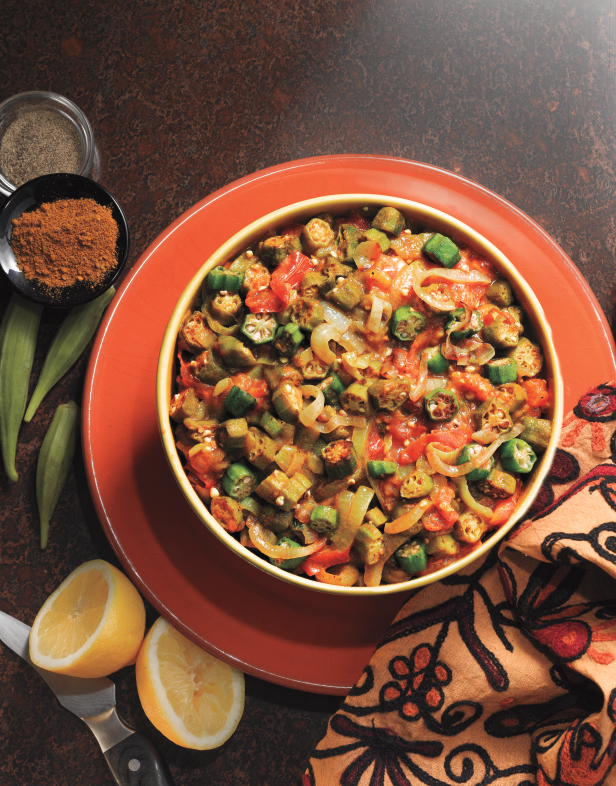
Kumari Devarajan ’17
Los Angeles
Kumari Devarajan ’17 usually lives in Los Angeles, where she is a producer for NPR’s Code Switch team (and, full disclosure, sometimes produces my radio pieces). But when I spoke to her, she was in Washington, D.C., at her parents’ home, working remotely for a few months.
Kumari did not grow up cooking because she didn’t have to: “I was very lucky because my dad loves cooking, and so we always had home-cooked meals, at least four out of five weeknights,” she says. Her parents were both economists at the World Bank. Her mother doesn’t cook, but she is a great baker. “In my house, all the cookie jars always were full,” Kumari says. “Whenever there was a bake sale or I had to bring anything for school, I didn’t even have to ask twice.”
She didn’t start cooking for herself “until after I graduated from college and was living on my own and just kind of had to start from scratch. I think what helps is I know what a good meal is supposed to taste like and smell like because I grew up with it. So that kind of motivated me to try to get good at it. My staples [are] pad thai or roasted green beans—and I like spending a whole day making Bolognese sauce.”
Kumari’s dad is a Tamil Sri Lankan, and when her paternal grandparents lived in the States for several years, her paatti (grandmother) missed her homeland and tried to replicate some of her favorite dishes with approximate equivalents from local grocery stores. She even wrote a cookbook, Curry in a Hurry, for others who wanted to try Sri Lankan food. Some of the ingredients, like coconut milk, are easily found in most grocery stores today, but back then, they were considered exotic and hard to find, so she substituted evaporated or dried milk. Making curry powder from scratch is common in much of South Asia, but for American cooks, commercial curry powder was probably a safer bet. Kumari’s dad (now a university professor) says the page with his mother’s curried okra recipe is “the most stained, because it was the most used.” It’s simple and quick and, Kumari says, is often served alongside a curried omelet for a light, satisfying dinner.
Amirthan Devarajan (via Kumari Devarajan ’17)
2 packets frozen okra or 250 grams (about 1 cup) fresh, sliced okra
1 onion, sliced
2 tomatoes, sliced
2 teaspoons curry powder
Salt
Juice of a lemon
In a flat frying pan, sauté the okra until cooked and soft to the touch. Fry the onion along with the okra, and add the sliced tomato, curry powder, and salt. Keep stirring for about 3 minutes. Remove from fire and add lemon juice.
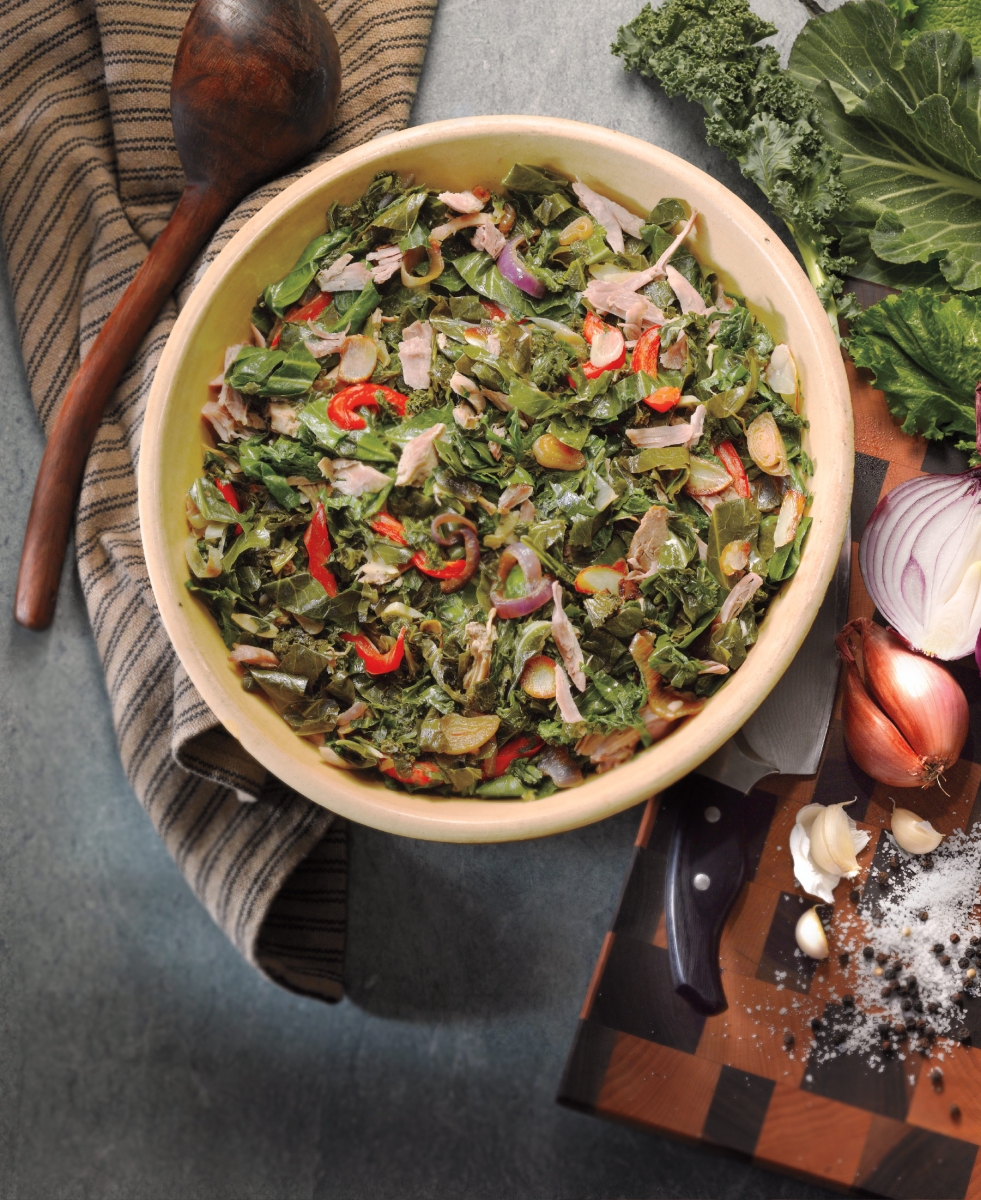
Paula Penn-Nabrit ’76
Columbus, Ohio
If you’re friends with Paula Penn-Nabrit ’76 on Facebook, you’ll see posts showing gorgeous baked goods, from bread to a pound cake made from her mother-in-law’s coveted recipe. There are pictures of glass jars filled with bounty from the community garden she established in memory of her late husband, Charles Madison Nabrit III, and nutritious drinks for everything that ails you. Paula says her interest in food started in childhood: “Everything revolved around food.”
She grew up in a deeply faithful family. “We come from the Apostolic Pentecostal tradition. And so what that means is you don’t drink, you don’t smoke, you don’t go to a movie. You don’t play cards. You don’t go to dances.” Given those parameters, “food is a form of entertainment. It’s also what you do when something bad happens. If somebody has a death in the community, we show up with food. It’s what you do to celebrate. When something wonderful happens, we eat.”
Some of her fondest memories center around going food shopping on Saturdays at Columbus, Ohio’s North Market with her father. She’d listen to his conversation with the butcher, the greengrocer as they debated the merits of this chop, that pear. “So, food was never a casual thing.”
As important as food was, Paula didn’t cook when she lived at home. Her mother worked and had someone in daily to keep house, watch Paula and her sisters, and start dinner for the family. When Paula married Charles, her new husband drew her into the kitchen. “He really taught me how to cook, and it was always fun for us to do together. And we continued that when we had our kids. All my kids can cook—and they’re really good cooks,” she says proudly.
One of Charles’ favorite foods was greens. “I grew up in Ohio. Turnips and other root vegetables were a big thing in my family,” she explains. Charles was from Memphis, “where greens were a regular part of the cuisine.” So she learned to cook greens to please her husband and discovered she loved them, too. “Greens are comforting because they are something that I associate with him. It was also comforting because when our children were babies, I would make greens and then give them the pot liquor [liquid].” Her boys were 4 and 5, she laughs, “before they realized not all juice is green!”
Mixed Greens with Smoked Turkey, Garlic, Onions, Peppers, and Shallots
8 cups turkey stock
2 bay leaves
10 peppercorns
2 tablespoons extra virgin olive oil
4 bunches collard greens, plus 2 bunches each kale, mustard greens, and turnip greens
2 turkey legs
2 each: red bell peppers, red onions, shallots
10 cloves of garlic
⅛ to ¼ cup balsamic vinegar
For the stock: Preheat the oven to 350 degrees. Wash turkey legs, pat dry, and place in a roasting pan lined with parchment paper or foil. Brush with extra virgin olive oil. Sprinkle with sea salt and fresh ground pepper to taste. Roast for 1 hour, remove turkey to cool, but leave the oven on. Cut meat from bones, put aside to shred once cooled, and return the bones to the pan.
Add 1 onion, 1 pepper, and 1 shallot to the pan. Each should be quartered, but there is no need to remove skin or seeds. Roast 30 minutes together with the bones. Dump all into an Instant Pot, cover with water, and add bay leaves and peppercorns. Set to high pressure for 2 hours. Use natural release and strain. Voilà—roast turkey stock! (If you don’t have an Instant Pot, put bones, onion, pepper, and shallot into a soup pot, cover with water, simmer for a few hours, then strain.)
For the greens: Wash greens, remove stems, roll the leaves, slice, and set aside. Peel and slice garlic. Core, remove seeds, and slice remaining pepper, onion, and shallot. Heat large soup pot, add olive oil and heat. Add garlic, pepper, onion, and shallot. Sauté until fragrant, then strain into a deep bowl (set aside the liquid as a nutritious drink). Pour 2 cups stock into the pot, add a layer of greens, some of the garlic mixture, and shredded turkey. Stir and add another cup of stock, a layer of greens, more garlic and turkey. Continue until all the greens, stock, garlic mixture, and turkey are added. Stir, bring to the edge of a boil, cover, reduce heat to simmer, and cook until desired tenderness. When done, stir in ⅛ to ¼ cup of balsamic vinegar to taste.
This recipe can be expanded (exponentially) without injury by adding more stock or water as needed.
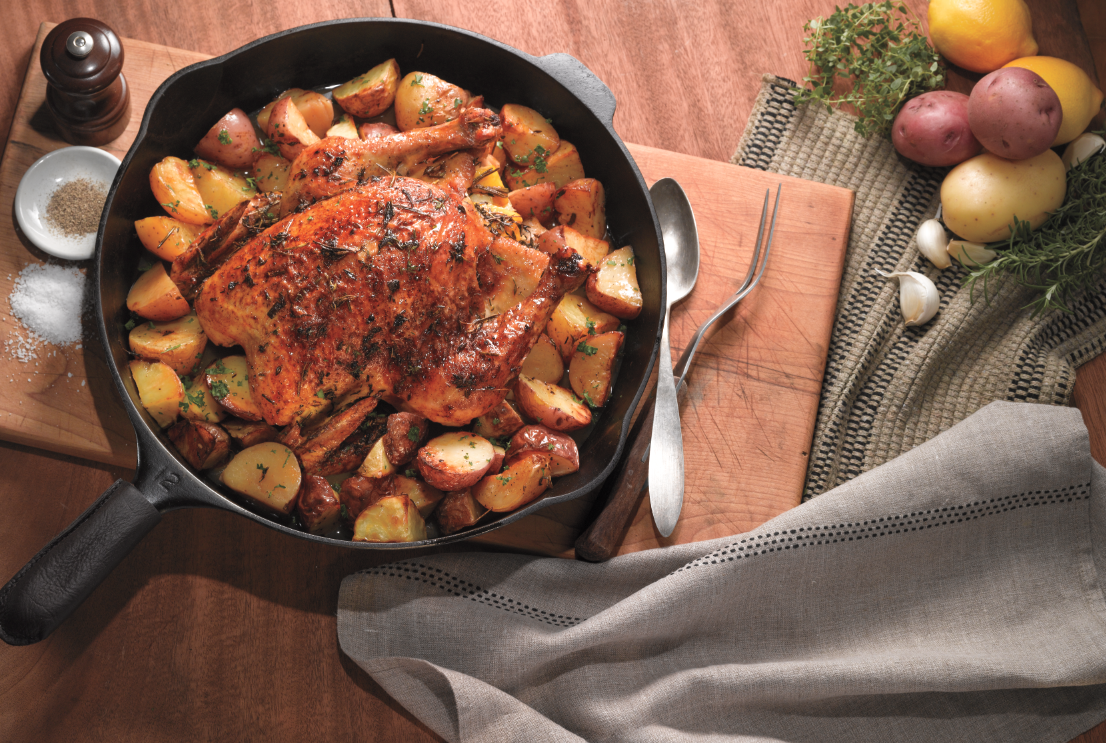
Margaret Hathaway ’98
Gray, Maine
Margaret Hathaway ’98 grew up in Kansas with a divorced working mother. “My mom is an English professor, and cooking was not something that she was super comfortable [with] or all that interested in,” she remembers. “She’s great at making granola and bread, but she’s just not much of an experimental cook. My dad had always done all the cooking.”
Her mother mostly made vegetarian dishes from the vegetarian bible at the time, The Moosewood Cookbook, so Margaret ate vegetarian, too. She remained a vegetarian while at Wellesley, but that changed when she was awarded a Fulbright fellowship to Tunisia. In North Africa, meat was a precious commodity, she recalls. “It just felt like it was going to be disrespectful to not eat meat if it was offered to me. And so I started eating meat there. And actually, the first time I bought a chicken to cook was at a live market in the medina (the main marketplace).”
After she graduated, Hathaway and her then-boyfriend, Karl Schatz, got married and settled in New York City. But Karl wanted to return home to Maine, and both of them had a long-held desire to raise dairy goats, so they packed up and bought a small farm. They’re raising three daughters, and they farm sustainably. All the girls have become cooks. And one of their favorite dishes is Margaret’s roast chicken, which they now make themselves.
“It’s a really simple roasted chicken, stuffed with whatever herbs I have to hand this time of year,” she explains. “It’s doused with some wine. And usually I cook some potatoes underneath.” The dish is comforting “because it takes a while to cook. The house starts to be perfumed. It’s one of those dishes that when I’m making it, I’m relaxed because it doesn’t take a lot of work.” And there are often leftovers: “You can make stock with the bones. So there’s comfort that there are meals to come as well.” Next: chicken noodle soup?
4- to 5-pound whole chicken (preferably hormone free and pasture raised)
Kosher salt and black pepper
1 lemon
3 cloves garlic
Large bunch herbs, single variety or combination of thyme, rosemary, sage, parsley, tarragon
2 tablespoons extra virgin olive oil (plus 1 tablespoon if adding optional potatoes)
½ teaspoon smoked paprika
1 cup dry white wine
1 cup chicken stock or water
1 pound potatoes, scrubbed and cut into chunks (optional)
Preheat oven to 425 degrees.
Use a paper towel to pat dry the chicken, and remove any giblets from the cavity. Generously salt the inside of the bird, and crack a little black pepper into the cavity. Slice the lemon in half and stuff both halves into the cavity. Using the side of a knife, smash the garlic cloves (you can leave on the papery peel) and add them to the cavity. Set aside a few sprigs of the herbs (enough to give you 2 tablespoons chopped), and stuff the remainder of the bunch into the cavity with the lemon halves and garlic cloves. It’s just fine to leave the herbs on their stems, and to fold them up so they’ll fit.
Rub the outside of the chicken with olive oil and sprinkle generously all over with kosher salt, cracked pepper, and smoked paprika. Strip the leaves from the reserved sprigs of herbs and chop them coarsely. Sprinkle the chopped herbs over the top of the chicken.
Place the chicken in a heavy-bottomed skillet or enameled casserole dish. Roast, uncovered, for 20 minutes. When the chicken is in the oven, combine the white wine and chicken stock or water in a measuring cup. After the first 20 minutes, baste the chicken with the wine mixture, then lower the oven temperature to 375. If adding potatoes, tuck them around the chicken and drizzle with the reserved tablespoon of olive oil.
Continue roasting the chicken, uncovered, and baste with the wine mixture every 20 minutes. Juices will begin to pool inside the cavity of the chicken, and when basting, use a spoon or bulb baster to pour those juices over the top of the chicken, too. Use a wooden spoon to occasionally scrape up and stir the potato chunks. After the final basting, make sure to return the chicken to the oven for 15 minutes to crisp up the skin.
The chicken will be done when the skin is browned and crispy, legs are loose in their joints, and a thermometer inserted into the thickest part of the bird reads 165 degrees (this will be after roughly 2 to 2½ hours, depending on the size of the chicken). When the chicken is ready, remove it from the oven, loosely tent it with foil, and allow to sit for 15 minutes before serving. Serve with the potatoes and pan juices.
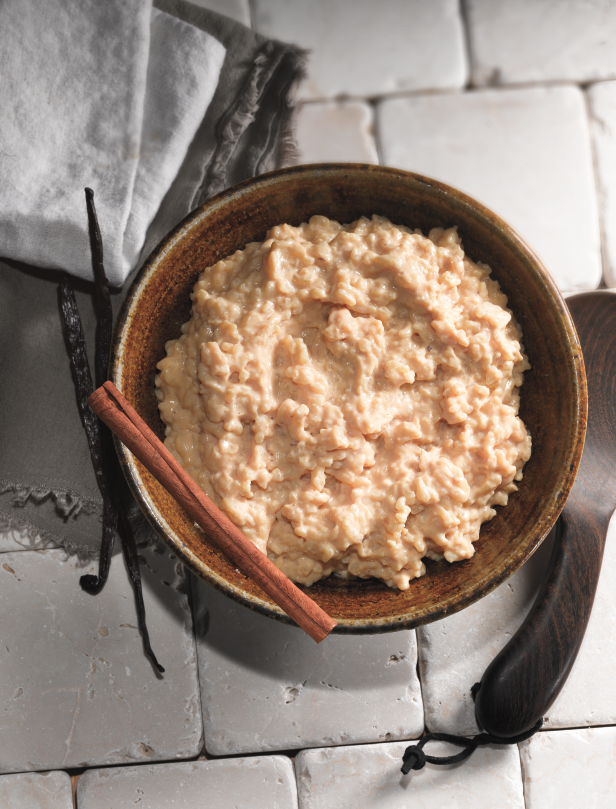
Luisa Bonillas ’94 and Ariana Gonzales-Bonillas ’18
Chandler, Ariz.
If this pandemic has had a silver lining, it’s that some families have gotten to spend more time together. Luisa Bonillas ’94, whose alumna daughter is currently working remotely from the family home, says they are mostly eating takeout at the moment “because we’re trying to support small businesses, to keep them afloat.” One thing that they don’t outsource, though, is dessert. And during this anxious time, Luisa finds herself turning to an old family recipe: a cinnamon-scented rice pudding that’s been passed down through the generations.
“My great-grandmother, my mom’s grandmother, is the one who taught my grandmother, and I don’t know where my great-grandmother learned it,” she says. “My mom grew up in this small little town in Mexico, and her mom, every afternoon, would bake something or make some special treat.” Arroz con leche was a family favorite. “They actually had it pretty often, but they liked it with evaporated milk. But because they lived in this tiny little pueblo, they didn’t always have evaporated milk, so they just used milk straight from the cow—literally straight from the cow!” When her grandmother moved to southern Arizona, life got busier, and arroz con leche was made less often. But Luisa recalls standing by the stove as her grandmother stirred the creamy mixture, and the scent of cinnamon filled the kitchen.
I wondered if either mother or daughter had ever tried commercial rice pudding. Polite pause. “We have tried it,” Ariana says carefully. The verdict? “Not good at all,” Luisa says firmly.
Luisa’s family recipe calls for Mexican cinnamon, which you can find in many Latino grocery stores. “It doesn’t come prepackaged and they sell it by the pound,” she says. It’s sweet and spicy and very fragrant. “And we use Mexican vanilla. It just makes the house smell so good, I love it.”
The dish is time-consuming: Luisa says you have to keep stirring the rice mixture as it cooks, so it doesn’t scorch. But that gives her time to slow down, think, and settle into herself a bit: “I have to dedicate time to doing this.”
And all that work, is it worth it? Definitely, Ariana says. “The time, and the memories and the smell—are all comfort.”
Which is exactly the point of comfort food.
Luisa Bonillas ’94 and Ariana Gonzalez-Bonillas ’18
1 cup long-grain white rice
3 cups water
2 or 3 3-inch cinnamon sticks
Pinch of salt
4 cups milk (almond or oat work best for nondairy options—we use almond)
1 can (14 ounces) sweetened condensed milk (you can substitute with 1½ cups granulated sugar for nondairy option, but we use condensed milk)
1 teaspoon vanilla extract
Preparation: Place the rice in a large pot with the water, cinnamon, and salt. Bring to a boil, lower the heat and cook, covered, until most of the water has been absorbed.
Stir in the milk and condensed milk (or sugar, if using) and cook, stirring constantly, over low heat, until the mixture thickens.
Add the vanilla and cook for 2 minutes.
Remove from the heat and let cool for 20 minutes. Can be served hot, or refrigerated for later. We often don’t wait the 20 minutes.
Karen Grigsby Bates ’73 is the senior correspondent for Code Switch, NPR’s popular podcast that covers race and identity. One of her favorite comfort food memories comes from Wellesley: “afternoon tea before the fireplace in Beebe.”




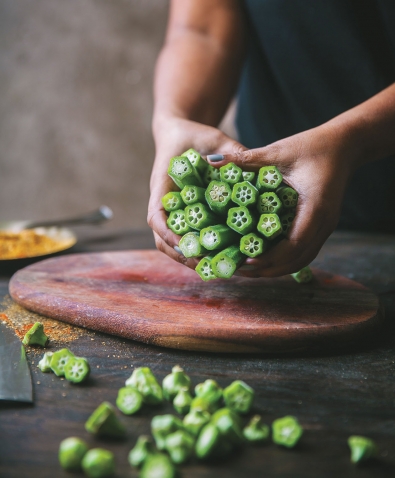







We ask that those who engage in Wellesley magazine's online community act with honesty, integrity, and respect. (Remember the honor code, alums?) We reserve the right to remove comments by impersonators or comments that are not civil and relevant to the subject at hand. By posting here, you are permitting Wellesley magazine to edit and republish your comment in all media. Please remember that all posts are public.